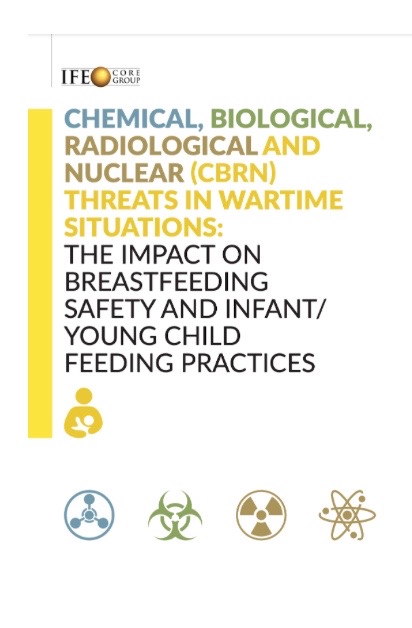CBRN Threats: Guidance for breastfeeding women & infants

Chemical, Biological, Radiological and Nuclear Threats: Guidance for breastfeeding women, infants, and young children
CBRN emergencies are among the most alarming threats facing the world today. In modern warfare, there is an increased risk of chemical, biological, radiological, and nuclear (CBRN) weapons exposure and of nuclear emergencies due to damage to nuclear power plants. Most international agencies have action guidelines for the general population, but an urgent gap exists in guidance specifically for the breastfeeding population. Before now, there was no centralized place for agencies or individuals to access vital information about the treatment of breastfeeding women, infants, and young children and the safety of breastfeeding in CBRN crises.
In response to the lack of critical information, The Infant Feeding in Emergencies (IFE) Core Group, along with the Johns Hopkins Center for Humanitarian Health, has created guidelines for the breastfeeding population in the context of the most common chemical and biological agents along with guidance for the first three days after a nuclear power plant emergency.
The guidance is a multi-disciplinary effort, drawing on expertise from a wide variety of fields including medical toxicology, infant feeding in emergencies, health security, CBRN preparedness, infectious disease, disaster response, and nuclear physics, among others. The evidence-based work is intended for policymakers, healthcare workers, and emergency planners and can be used alongside existing guidance for the general public and healthcare workers. This remains an evolving field and the guidance will be updated as new information becomes available.
LINKS:
Back to Top



.jpeg)
.jpeg)